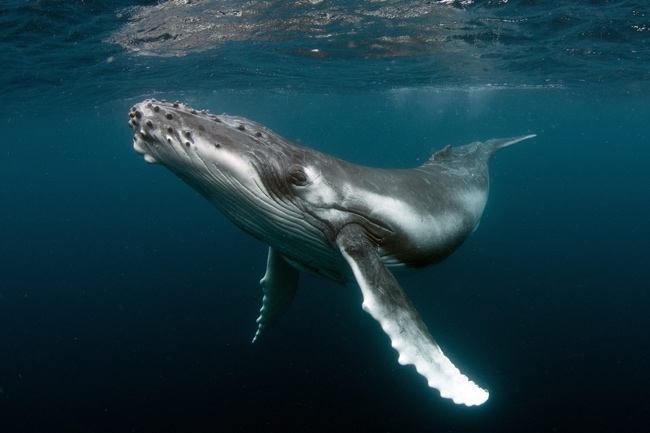
General Information
The humpback whale is a typical representative of cetaceans, which despite their underwater life, are also mammals. In evolutionary terms, whales are ancient mammals that returned to life underwater, which means their bodies were adapted to high pressure. Humpback whales are thought to inhabit all of Earth’s oceans except the Arctic due to low temperatures. Humpback whales have folds of keratinous skin along their entire body, which spread out during feeding to increase their water intake. The life cycle of such whales is closely tied to seasonal changes which provoke waves of migration. Humpback whale offspring conceived in winter feed on their mother’s milk even underwater. The feeding mechanism of humpback whales is based on filtration, during which substantial cubic meters of water are absorbed by the animal, and small fish, plankton, and crustaceans remain on the long whale whiskers.
Skull structure
The skull of the humpback whale is asymmetrical and robust, which is necessary to balance the animal’s heavy head. Part of the lower jaw is fused with the upper, and the latter has no teeth. At the same time, the lower jaw is slightly forward so that the front part of the animal’s body ends as if rounded. The depressions under the eyeballs are small, as are the eyes themselves, which is obvious, given the underwater life of the mammal. It is noteworthy that in the structure of the humpback whale brain, there are no visible differences from other whales, but the olfactory areas are strongly reduced, which indicates that whales have no sense of smell.
Structure of the postcranial skeleton
The name of this whale species is fully justified by its external appearance: the structure of the spine creates a similar hump in the dorsal region. There are wart-like growths all over the body, which are probably rudimentary hair follicles. The humpback whale has two pectoral fins, each represented by four undeveloped fingers of different lengths and one caudal fin. The maximum body length of such a whale is 19 meters, and the whale can weigh up to 40 tons. The skeletal bones are represented by spongy material, and the bones are densely impregnated with fat. This feature is dictated by the need for enhanced thermoregulation of marine animals. The long spine consists of 98 vertebrae divided into four sections. The spine flattens in the lumbar area, which is necessary for balancing the heavy body. The hind limbs are wholly reduced, but the rudimentary remains of the pelvic bones, which have no connection with the spine, are preserved.